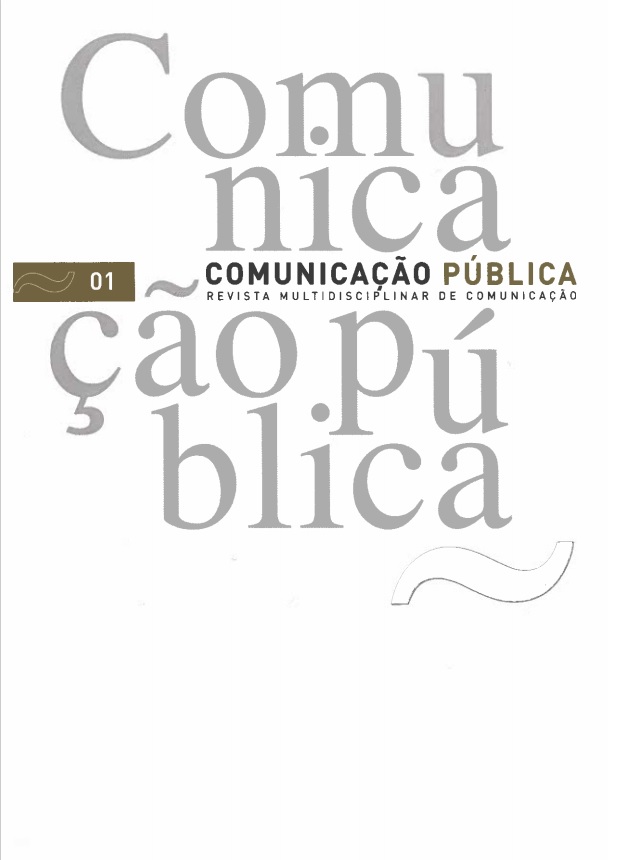The death of Diana, Princess of Wales
mediatization and mythification
DOI:
https://doi.org/10.4000/cp.9972Keywords:
myth, image, symbol, iconicity, epic construction, mediatization, melodrama, delusionAbstract
This paper examines the process of mythification and epic reconstruction of Diana´s image following her death. In the broader context of the post-modern culture of images and spectacle, the emphasis is placed upon the social and political meanings underlying the TV coverage of this tragic event. The melodramatic aestheticization of Diana´s funeral is thus analysed in the context of the political sphere of the New Labour majority led by Tony Blair, and compared to the relatively minor impact produced by the funeral of one of the most outstanding Church’s figures of the twentieth century, Mother Teresa, who died a few days after Diana.
Downloads
References
Bhabha, H. (1998) Designer creations. In Merck, M. ed. After Diana. London, Verso, pp. 103-110.
Blain, N. & O’Donnel, H. (1999) Constructing the people’s princess: the state of Britain and the death of Diana”. In D’Arcy, C. ed. Culture and power: cultural confrontations. Zaragoza, University of Zaragoza, pp. 121-136.
Cohen, N. [et. al.] (1997) How Blair gave the monarchy a millbank makeover. The observer, 7 September, pp. 12-13.
Dayan, D. & Katz, E. (1994) [1999] A história em directo. Os acontecimentos mediáticos na televisão. Coimbra, Minerva.
Fairclough, N. (1995) Media discourse. London, Edward Arnold.
Gaillard, F. (1998) Diana, postmodern Madonna. In Merck, M. ed. After Diana. London, Verso, pp. 159-167.
Gosh, P. (1999) Mediate and immediate mourning. In Kear, A. & Lynn, D. eds. Mourning Diana. London, Routledge, pp. 41-47.
Gripsrud, J. (1992) [1996] The aesthetics and politics of melodrama. In Dahlgren, P. & Sparks, C. eds. Journalism and popular culture. London, Sage Publications, pp. 84-95.
Hey, V. (1999) Be(long)ing. In Kear, A. & Lynn, D. eds. Mourning Diana. London, Routledge, pp. 60-75.
Kear, A. & Steinberg, D. (1999) Ghost writing. In Kear, A. & Lynn, D. eds. Mourning Diana. London, Routledge, pp. 1-14.
Kelleher, J. (1999) Rhetoric, nation, and the people’s property. In Kear, A. & Lynn, D. eds. Mourning Diana. London, Routledge, pp. 77-97.
McGuigan, J. (2000) Death of a princess. Anglo-saxónica. Revista de estudos anglísticos da Universidade de Lisboa, série II, nº 12/13, Lisboa, Edições Colibri, pp. 327-349.
Nairn, T. (2000) After Britain. New labour and the return of Scotland. London, Granta Publications.
Pina, A. (1998) Mourning for Diana. Anglo-saxónica. Revista de Eestudos anglísticos da Universidade de Lisboa, série II, nº 8/9, Lisboa, Edições Colibri, pp. 235-238.
Pryer, N. (1997) Romance that ended years of heartache. The evening standard, 1 September, p.47.
Rozsnyai, S. (1997) A portrait of the man who brought happiness to the princess in the final weeks of her Life. Hello, nº474, 6 September, pp. 84-88.
She will always be the people’s princess. (1997) The daily telegraph, 1 September, p. 11.
Storey, J. (1993) An introductory guide to cultural theory and popular culture. London, Harvester/ Wheatsheaf.
Wilson, E. (1998) The unbearable lightness of Diana. In Merck, M. ed. After Diana. London, Verso, pp. 111-125.
Wintour, P. (1997) Blair saw Diana as an envoy for new Britain. The observer, 7 September, p. 6.
Published
Issue
Section
License
Copyright (c) 2005 Direitos de Autor (c) 2005

This work is licensed under a Creative Commons Attribution-NonCommercial 4.0 International License.
Os conteúdos da Comunicação Pública estão licenciados com uma licença Creative Commons - Atribuição-NãoComercial 4.0 Internacional.


